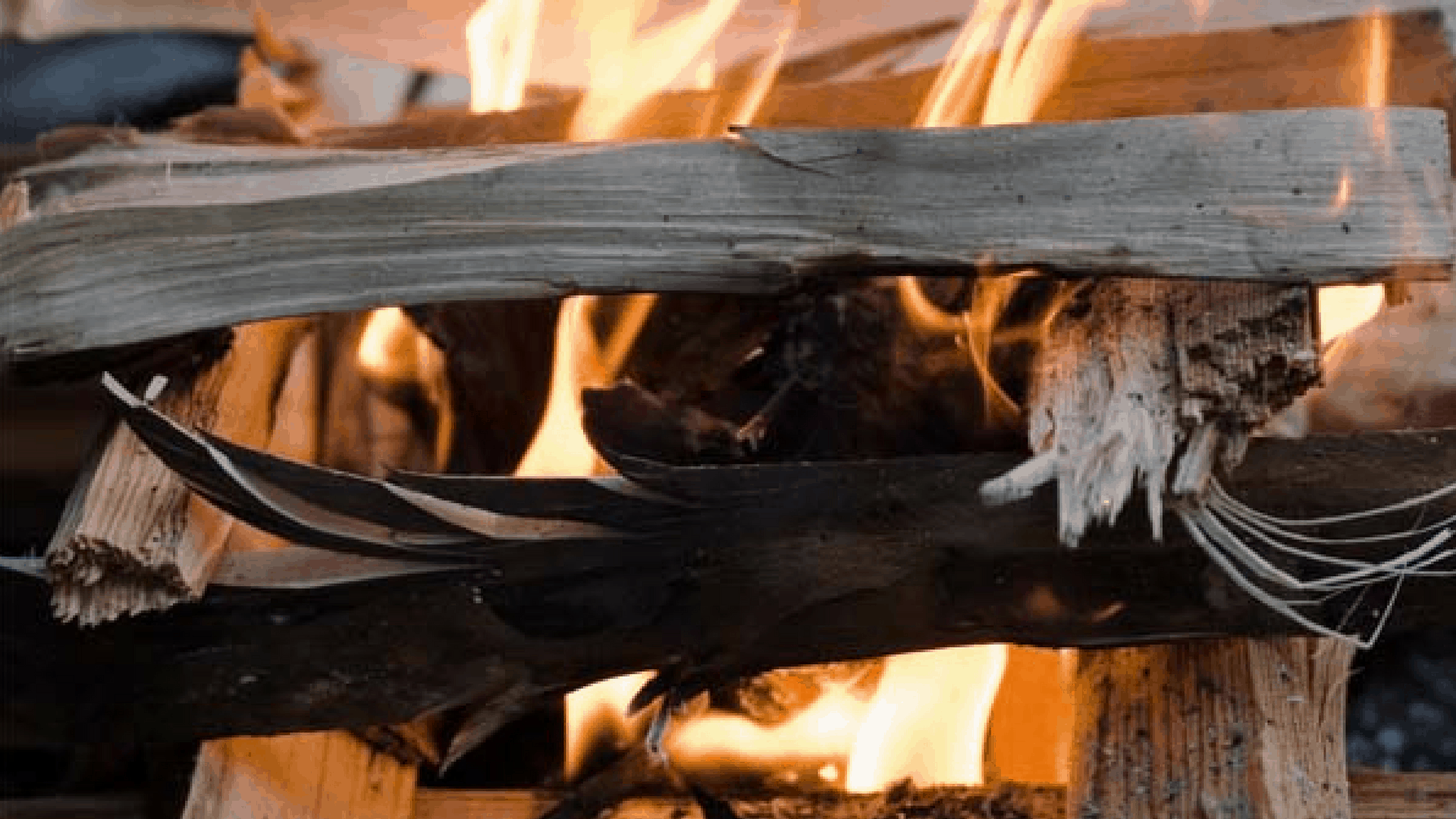Planning a camping trip soon? We all know that camping is so much better with a campfire to sit around. Campfires are the place where hands are warmed, marshmallows are toasted, great stories are told and new friendships are forged.
Building a campfire is easy as long as you know what you’re doing. Check out our tips on how to make a campfire and you’ll be a very happy camper next time you head out on a weekend away with mates.
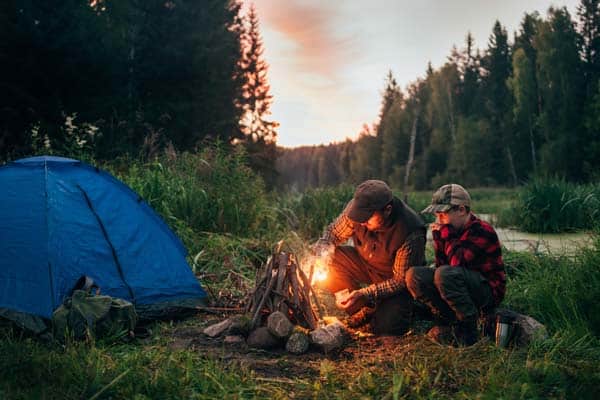
Before you start
Remember that not all camp grounds allow campfires, so make sure you do your research before heading off. If you’re camping at a National Park (in NSW), check the ‘Important Info’ part of the webpage for that campground to see if fires are allowed.
As a general rule, campfires are also not allowed on beaches contained in National Parks. In any case, the rules can vary from campground to campground, so make sure you read up on them, and if in doubt, contact the parks office.
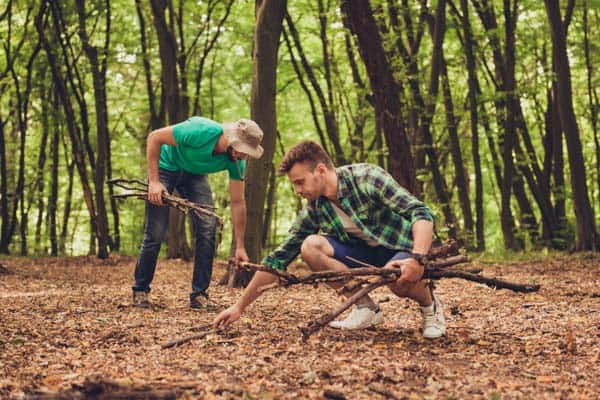
You should also make sure there are no fire bans in place. There are different types of fire bans – check out more information on these here.
Types of campfire
Did you know that there are different ways to build a successful campfire, depending on the conditions and what you need your fire to achieve? Check out the below common types of fires and the benefits of each.
Tepee
Simplest style. Easy to build.
Lean-to
Sheltered – good for bad weather.
Log cabin or criss-cross
Low maintenance, slow burning. Will burn for longer than a tepee. Steady heat makes it good for cooking.
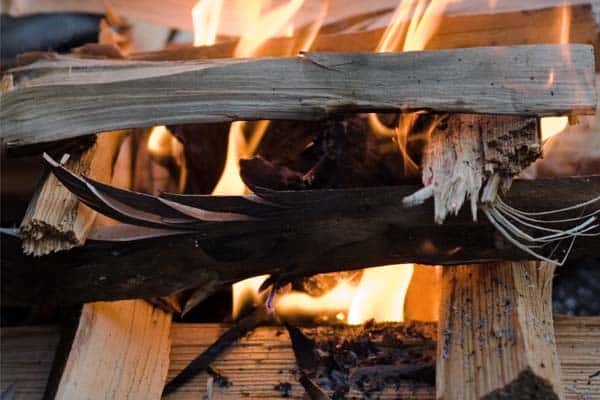
Star
Minimal wood, slowest burning.
Swedish torch
Puts out a little heat (not a lot of light), but is slow burning.
Keyhole firepit
A combination of the best types. Build a tepee fire in the circle part and then use hot coals in the skinnier section of the ‘key hole’ for cooking over, or even build a criss-cross fire in that section.
Steps to building a campfire
Building a successful fire is kind of like making a cake; you should prepare all of your key ingredients beforehand. This will ensure you are organised and guarantee that the fire has the best chance of going the distance. Here are the key steps to building a campfire:
1. Gather your burning material
Remember that all wood should be dry and have fallen from the tree. A good way to check if it is dry is to bend the twig or branch, if it snaps easy it is dry. If you are unable to bend it, it’s probably green. You will need the following:
Tinder – that is dead twigs. As a guide, tinder should be no thicker than a pencil lead and you’ll need enough to fill a circle made with both your hands, at the very minimum. Scrunched up newspaper is also useful to put in with your tinder and help accelerate the lighting process.
Kindling – slightly larger twigs and sticks that will help you get your fire going once you’ve lit it and got a good flame going. Kindling pieces should ideally be no thicker than your thumb and the length of your elbow to your fingertips.
Fuel – bigger pieces of wood to add to the fire as it grows – these are the pieces that will give your fire heat and a longer burn time. Your fuel should be dry and split. Stack them in a pile ready to go, before you even think about lighting your fire. Fuel should be around the thickness of your wrist. You’ll need at least a pile as big as the height of your foot to your knee.
Make sure you collect your tinder, kindling and fuel before it gets dark. If possible, bring it from home as you might find it hard to get enough if there’s been other campers there before you.
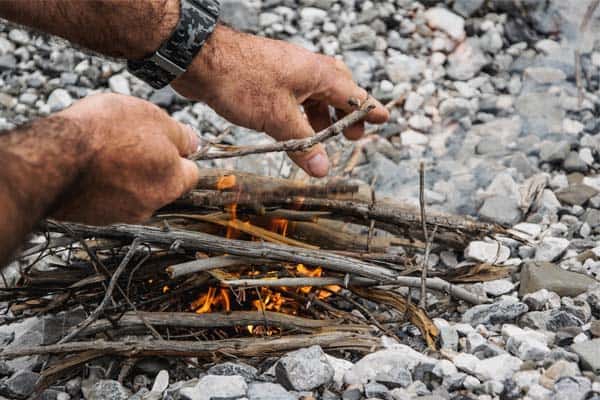
Best fuel types for campfires
Soft (but dry) wood is the best for starting off your fire. Softer woods will ignite easily and get your fire going faster but they won’t create many coals. If you pick the right soft wood, it will create coals which will ensure your fire has longevity. Hard woods will take longer to ignite so you’ll need to build up your coal base to get them going but once they are lit they throw out more heat and burn slower.
According to the Firewood Association of Australia:
“The answer depends to a large extent on what wood is available. For example, in Western Australia, Jarrah and Wandoo are considered the best. In Tasmania, Brown Peppermint is considered best. In South Australia, Victoria and southern NSW it is generally River Red Gum. In Queensland, Ironbark and Box are preferred. It also depends on what you are using the wood for. Red Gum is excellent in a slow combustion heater but does not burn with a lot of flame, so other species are usually preferred for open fires”.
Woods that do not burn well
“Some species are known to not burn well at all, Turpentine and White Stringybark being two of these. Each species has its own characteristics of burning rate, flame, coal and ash generation, which mainly relate to wood density and the chemical composition of tannins etc. Perhaps the best thing to do is to try a range of the available species and pick the most suitable, which may be a mix of quicker and slower burning species.”
Read more about the types of wood that work best here.
Know the rules about firewood
Getting back to what we were saying earlier about fires in National Parks, some campgrounds require you to bring your own firewood. Research before you leave home, or check for signage at your campground. If in doubt, contact the local park office.
Some National Parks also provide a designated fireplace that has been specifically located and built for the purpose. Make sure you use these where supplied.
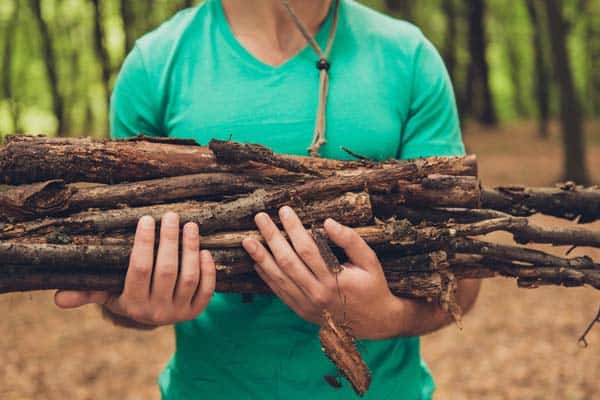
How to tell if the wood is dry enough
Here are some tips on how to tell if your fuel is dry enough to burn:
- Dry wood weighs less than wet wood because it has less water content
- Dry wood tends to lose its colour and will have a more greyish tinge to it
- If you knock two pieces of dry wood together, they will make a hollow sound
- Look for cracks in the end of the log in question. Cracks generally can mean that the wood is dry
- If you’re unsure, try splitting the log to see if it is dry on the inside
Read this handy guide on how to chop firewood.
Tips for a safe campfire experience
- Choose the location of your fire carefully. Locate it in a clear area, away from low-hanging tree branches, tree stumps, dry grass and leaves.
- Start with dry twigs and small sticks.
- Remember that a well-built fire will not require fire starters or fuel (such as petrol) to get going.
- Add larger sticks slowly as the fire builds up, don’t do this too early.
- Don’t cut branches off trees because this wood is green and won’t burn.
- Never, ever leave a campfire unattended, as it could spread easily and become a safety risk quite quickly.
- Never use flammable liquids to start or accelerate a fire, this is very dangerous.
- Extinguish a fire by pouring water over the flames and smothering the coals with soil and ensure the fire is completely out and the coals are cold before leaving it unattended.

